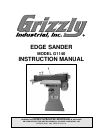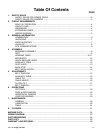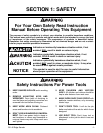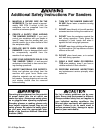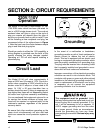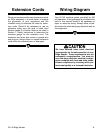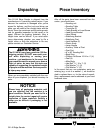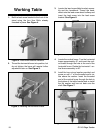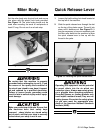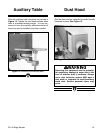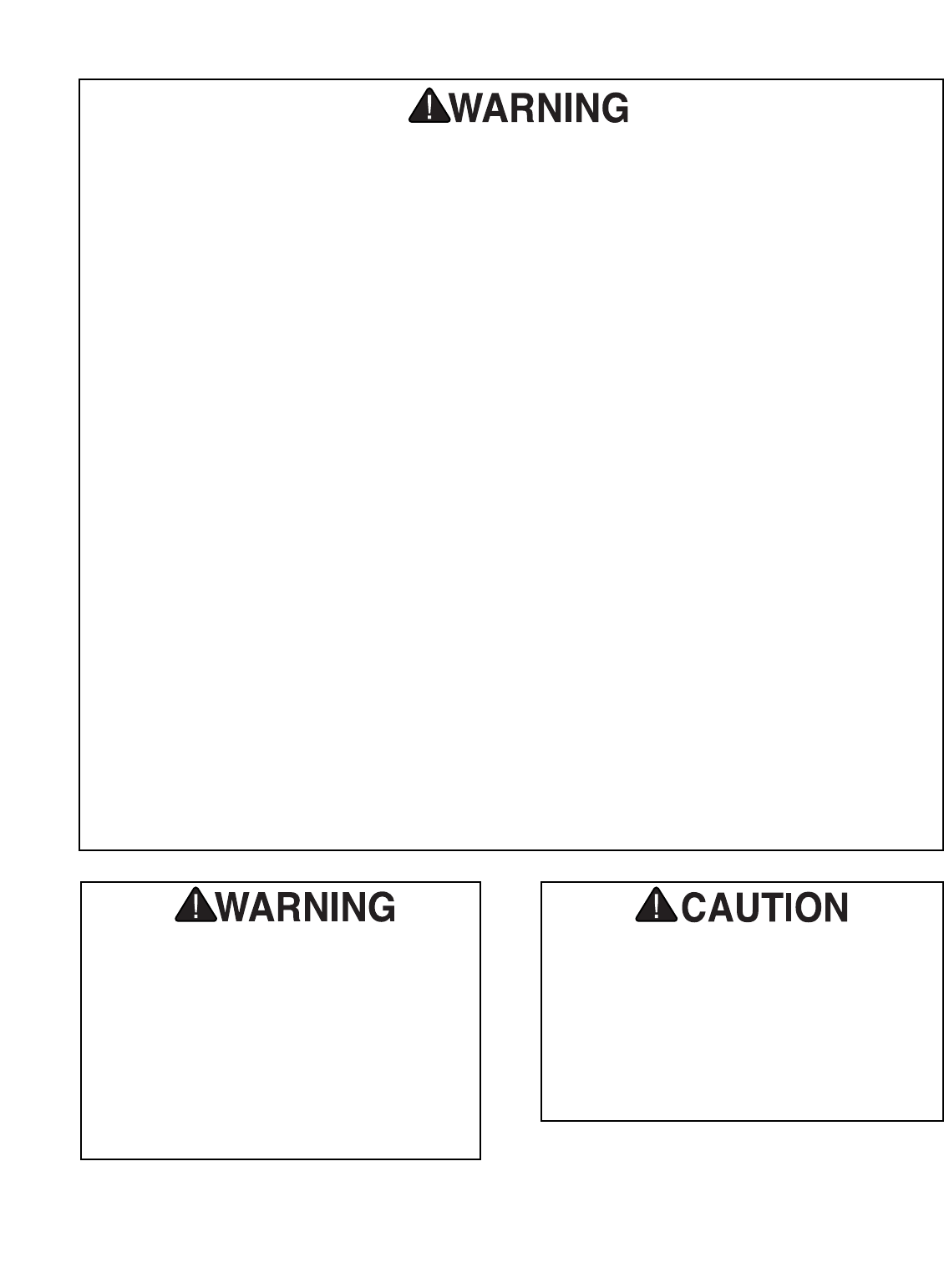
G1140 Edge Sander -3-
6. TURN OFF THE SANDER WHEN NOT
IN USE. Never leave a machine running
unattended.
7. DO NOT stand directly in line with sanding
accessories when turning the machine on.
8. DO NOT force the workpiece against the
belt during operation. Firmly grasp the
workpiece in both hands and ease it
against the belt using light pressure.
9. DO NOT wear loose clothing while operat-
ing this machine. Roll up sleeves or button
sleeves at the cuff.
10. DO NOT place hands near, or in contact
with belt during operation.
11. WEAR A DUST MASK OR RESPIRA-
TOR when sanding, even if you have a
reliable method of dust collection.
12. PERFORM MACHINE INSPECTIONS
and maintenance service promptly when
called for.
1. MAINTAIN A SECURE GRIP ON THE
WORKPIECE. The belt speed is approxi-
mately 1800 FPM. If control is lost, the
workpiece can be propelled from the
machine at extreme speed.
2. CREATE A SAFETY ZONE AROUND
THE SANDING SURFACE. If you can't
control your workpiece with your hands at
least 6" away from the sanding belt, you
should create a jig or other device to hold
the workpiece safely.
3. REPLACE BELTS WHEN WORN OR
DAMAGED. A torn or damaged belt could
be unexpectedly expelled from the
machine if not replaced.
4. KEEP YOUR WORKPIECE SOLIDLY ON
THE SANDER TABLE. A well-secured
workpiece is less likely to lose control dur-
ing sanding operations.
5. INSPECT MATERIALS FOR DEFECTS.
Knots and splinters can shoot from the
machine with great force. Make sure
defective materials are not used on the
belt sander. Foreign objects such as nails
and staples should also be removed
before sanding.
No list of safety guidelines can be com-
plete. Every shop environment is different.
Always consider safety first, as it applies to
your individual working conditions. Use
this and other machinery with caution and
respect. Failure to do so could result in
serious personal injury, damage to equip-
ment or poor work results.
Operating this equipment has the potential
to propel debris into the air which can
cause eye injury. Always wear safety glass-
es or goggles when operating equipment.
Everyday glasses or reading glasses only
have impact resistant lenses, they are not
safety glasses. Be certain the safety glass-
es you wear meet the appropriate stan-
dards of the American National Standards
Institute (ANSI).
Additional Safety Instructions For Sanders



